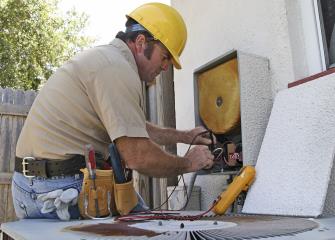
Real estate asset management seeks to reduce risk while maximising returns on investments. Asset managers are able to provide firsthand information to investors on the factors that influence an asset's performance and take into consideration its entire lifecycle. They also devise and execute economic strategy for investors.
The role of asset manager has grown as institutional ownership has replaced individual ownership. An asset manager typically has years of experience with the asset class he/she is managing. This includes market research, portfolio optimization, data analysis, and forecasting. Real estate investing presents many challenges that require an understanding of tax and legal rules.
The strategy of property asset management involves the development of a business plan and making strategic improvements to maximize the value of assets. Asset managers must have a precise inventory of the property. This includes rents, operating costs, rights, and other rights. These are important factors when deciding how to structure leases to attract tenants. The key step to success is having a great property manger.

Typical business plans may include a market study of local demand for the property, an assessment of the current and future supply of the target market, an estimation of the cost of property improvement, and an evaluation of opportunities for new management. After the business plan is created, it can then be used to generate steady cashflow and increase the property's value over time.
Unlike capital markets, real estate has a very complicated process to buy and manage properties. Asset managers have the ability to use their investor expertise to help investors invest in real property. Asset managers may conduct stress tests to assess investor portfolios.
Whether you are a passive investor or a large investor, it is important to have a professional real estate asset manager in your corner. A good property manager can help you feel secure by helping you achieve your goals, as well as monitoring the performance and ensuring that you are not disappointed.
Asset managers should integrate a local presence into their investing efforts. That way, they can provide timely updates, track data, and make strategic decisions that benefit the investment portfolio. Investors can be advised by asset managers on the best ways to improve the value of investments. Asset managers' services can boost your investment returns by up to 30%

Although asset management isn't new, the practice has developed over the past 50 year. An asset manager is able to increase the investment portfolio's value while decreasing expenses. A good asset manager can give you firsthand information about trends and other factors that impact the real estate market.
Asset managers perform market research and budgeting. They also manage capital improvements and capital improvement projects. Many times, they are responsible for managing a portfolio that includes eight to twelve properties. An asset manager can focus on one type of property or a specific region depending on how large your portfolio is.
FAQ
Are handymen insured?
Yes! Yes. Many insurance companies cover liability claims that exceed $1 million for bodily injuries and property damage. Your insurance company will typically compensate you for damages if there is a problem during the project.
What is the average time it takes to complete a DIY project?
An average DIY project takes between two and four hours. The project's complexity and difficulty will impact the length.
What are the most common handyman repairs?
Handymen commonly repair damaged roofs, windows, doors, gutters, siding, decks, fences, sheds, hot water heaters, air conditioning units, and electrical systems. Handymen are available to help homeowners with home improvements and building projects. They can also assist with plumbing, painting, drywall, landscaping, concrete work as well as tiling and decking.
What should I choose: hourly or per-project?
Personal preference is the most important factor. Some people prefer paying by the hour to know exactly how much their handyman charges. Some prefer to pay for each project, even though they may be doing multiple jobs at once. It doesn't matter which way you go, it works great.
Do I need a license to become a handyman?
In most states, you won't need a license to become an independent contractor (as opposed to a salaried employee). However, certain requirements must be met:
-
Must be at least 18
-
You should have a high school diploma, or a GED.
-
Completion of a 4-week course at a vocational high school.
-
Check your background through the Department of Licensing.
-
Register for the year by paying $20
You will also require a business license as well as workers' compensation insurance.
Who will take care of my handyman job?
A professional handyman is the best choice if you need someone to do a single job like fixing a faucet or replacing a light fixture. A handyman service might be a good option if you have multiple jobs to do, such as replacing a roof or installing floor tiles.
Handyman Services offers you ongoing support and maintenance.
How do I find a trusted handyman?
Before you hire a handyman, make sure to check their references. Ask friends and family members who have used him or her in the past. You can also look online for handymen's reviews.
Statistics
- More than 20% of homes in America have outdoor living spaces, including decks and patios. (mrhandyman.com)
- Our handyman services for seniors are provided by professional senior helpers who have been serving the community for over 20 years with 98% customer satisfaction. (cantatahomeservices.org)
- With a strong housing market, the handyman and general maintenance worker industry are expected to grow by nearly 10% in the next decade. (housecallpro.com)
- Another estimate was that the market in the United States was $126 billion and was increasing by about 4% annually. (en.wikipedia.org)
- According to the U.S. Bureau of Labor Statistics, in May 2020, there are 1,357,630 handymen employed in the U.S.. (angi.com)
External Links
How To
How to replace a broken tile
Step 1 - Take out the old tiles.
Take out the tiles and place them on a new flooring surface. If you plan to use these tiles later, it is important that you keep them in good condition. It's important to note which parts are missing or damaged in order to be able to find the right replacements.
Step 2: Choose New Tiles
Look at these different options for replacing tiles.
-
You should find a similar tile to the one that you've just taken out.
-
Use the measurements you took when removing the tile to find a matching piece. This will make it much easier to find the right size without measuring again.
-
Look for various colors, patterns, textures, sizes, shapes, etc.
-
If you have a preference for grout, consider what it would be best to use. Some people like a consistent color while others prefer mixing it.
-
It is important to ensure that the tile you choose resists moisture.
-
Consider the location of your tile. You can save both time and money by making sure that there is enough room for proper installation.
-
Once you've chosen your tile, order it online or call your local Lowe's store to place your order.
Step 3 – Install the new tiles.
To install your tiles, follow the same procedure as before. You must align them correctly to ensure they fit together.
Step 4 – Clean up
Be sure to vacuum up all crumbs and debris before applying the last layer.
This will prevent dirt and dust from settling into the cracks between the tiles that could cause mold.
Step 5 - Sand the Floor
After cleaning, sand the floors to remove any particles.
Step 6 – Finish Off
Once the floor is smooth, apply the protective coatings. Because wet paint can cause damage to the tiles' surfaces, it is important that you wait.
You can always use a "damp and dry" product on your floors to protect them from staining.
It won't solve every problem after your tiles are installed. For example, if you have a lot of kids running around, you may want to consider using an anti-slip coating on top of the protective layer.
Last but not least, be sure to leave the protective sealing on for several weeks before you return to your home.